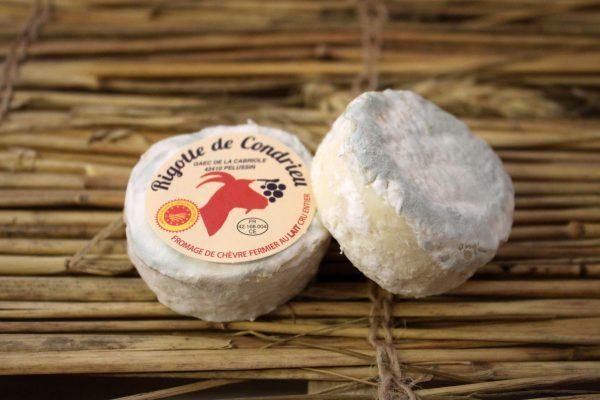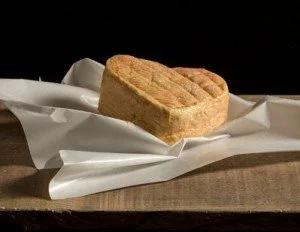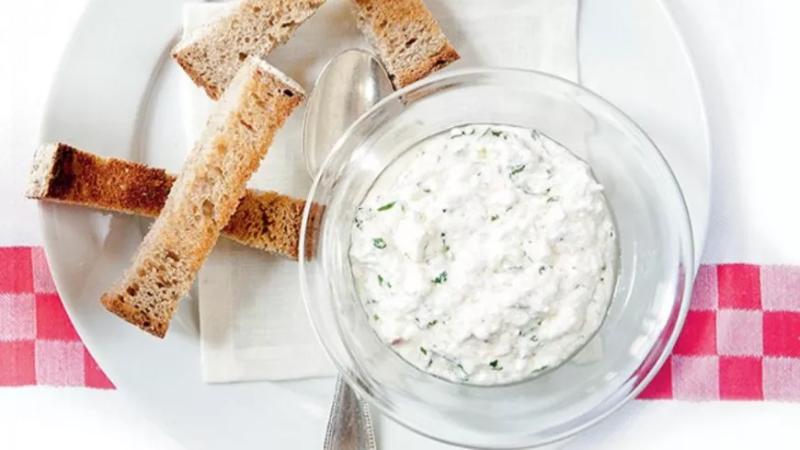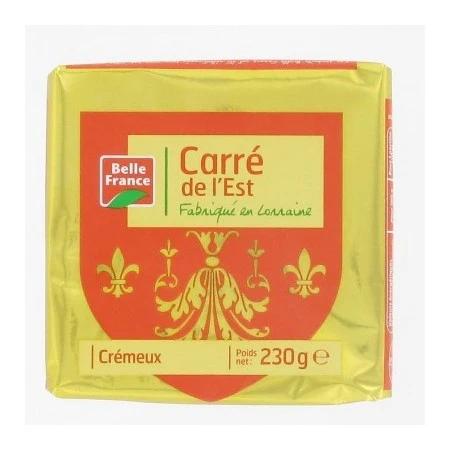Discover Rigotte de Condrieu, a small-batch Rhône Valley goat cheese with centuries of tradition. This artisanal French gem boasts tangy, earthy flavors and a creamy texture from handcrafted production methods. Learn why this AOC-protected cheese has a rich feminist history and pairs perfectly with Rhône wines. Find out where to buy authentic Rigotte and how to serve it like a true connoisseur. Elevate your cheese board with this hidden treasure of French fromage!
Estimated reading time: 10 minutes
Key Takeaways
- Rigotte de Condrieu is an AOC-protected goat cheese from France's Rhône Valley
- Has a rich feminist history as "porte-monnaie des femmes" (women's purse)
- Features tangy, earthy flavors with honey and acacia undertones
- Pairs perfectly with Rhône wines like Condrieu whites and Cornas reds
- Best purchased at specialty shops or farmers' markets in France
Table of Contents
- Discover Rigotte de Condrieu
- The Rich Heritage of Rigotte de Condrieu
- Artisanal Craftsmanship: Production Methods
- What Does Rigotte de Condrieu Taste Like?
- Nutritional Value
- Finding Rigotte de Condrieu
- Chefs Weigh In
- Storage and Serving Tips
- Perfect Pairings
- Conclusion
- Frequently Asked Questions
Discover Rigotte de Condrieu: A French Goat Cheese Gem from the Rhône Valley
Picture this: a cheese so cherished by locals that its name honors both mountain streams (rigots) and a bustling market town. Meet Rigotte de Condrieu, a petite goat cheese from France's Rhône Valley with a story as rich as its flavor. Crafted in the shadow of the Pilat Massif, this artisanal treasure boasts AOC/AOP status (as detailed in our guide to French AOC classifications), ensuring every bite carries centuries of tradition. Let's explore why this small-batch cheese deserves a starring role on your next cheese board!
The Rich Heritage of Rigotte de Condrieu: A Small-Batch Cheese Tradition
Born in the Lyonnaise countryside, Rigotte de Condrieu has been a local staple since the 1700s. Its name nods to the rigots—sparkling streams that nourish the Pilat Regional Natural Park—and Condrieu, the town where farmers once sold their wares at lively markets [Source: La Cuisine Paris (https://lacuisineparis.com/blog/cheese-of-the-month-rigotte-de-condrieu)].
Fun Fact: During the 1930s, goat herds dwindled, so farmers mixed cow's milk into the recipe. Today, true Rigotte uses only raw goat's milk, thanks to strict AOC rules established in 2009 [Source: Cheese.com (https://www.cheese.com/rigotte/)].
This Rhône Valley cheese also has a feminist backstory! Known as "porte-monnaie des femmes" (women's purse), it provided income for rural women who crafted it while managing households [Source: La Cuisine Paris (https://lacuisineparis.com/blog/cheese-of-the-month-rigotte-de-condrieu)].
Historical Tidbit: During WWII, families hid goats in basements to keep Rigotte production alive under rationing. One farmer, Marie-Louise Roux, smuggled milk in hollowed-out loaves of bread—a trick still celebrated at local festivals!
Artisanal Craftsmanship: The Cheese Production Methods Behind Rigotte de Condrieu
Every step of Rigotte's creation is a love letter to tradition:
- Milk Source: Unpasteurized milk from goats bred in the Massif Central region [Source: The Cheese and I (http://thecheeseandi.blogspot.com/2013/02/rigotte-de-condrieu.html)].
- Shaping: Hand-ladled into molds, creating its signature "hockey puck" shape (weighing at least 30g!).
- Aging: Aged 10–21 days to develop a wrinkled rind and creamy interior [Source: La Cuisine Paris (https://lacuisineparis.com/blog/cheese-of-the-month-rigotte-de-condrieu)].
Industrial copies can't compete—authentic Rigotte must come from Pilat's slopes, per AOC guidelines. Learn how traditional methods shape other French cheese varieties like Crottin de Chavignol.
Behind the Scenes: The Duparc family, cheesemakers since 1897, still use wooden molds carved by their ancestors. Their secret? Rotating the cheeses hourly for even aging—a practice passed down for generations.
What Does Rigotte de Condrieu Taste Like? A Flavor Profile Guide
This cheese is a flavor chameleon! Young Rigotte is mild and nutty, but as it ages, expect:
- Tangy, earthy notes with a hazelnut finish
- Honey and acacia undertones in matured batches
- A soft, creamy texture beneath its delicate rind
Pro Tip: Pair it with Rhône wines like Condrieu whites (explore top French wines for charcuterie) or Cornas reds [Source: Cheese.com (https://www.cheese.com/rigotte/)].
Local Legend: Farmers say the goats graze on wild thyme and juniper, giving Rigotte a subtle herbal whisper. Taste closely—can you detect it?
Nutritional Value: Why This French Goat Cheese Is Good for You
Goat cheese lovers, rejoice! Rigotte offers:
- Probiotics for gut health
- 25% protein content per serving
- Less lactose than cow's milk cheeses
Note: Its 45% fat content makes it a treat best enjoyed in moderation.
Did You Know? In the 19th century, Lyon's doctors prescribed Rigotte to convalescing patients for its "strengthening properties." Today, we know it's all about those gut-friendly cultures!
Finding Rigotte de Condrieu: Availability and Best Places to Purchase
Skip the supermarket! Hunt for Rigotte at:
- French farmers' markets (especially near Lyon)
- Specialty cheese shops like Paris' La Fromagerie
- Online retailers (check for AOC/AOP certification)
Avoid plastic-wrapped imitations—real Rigotte breathes through bark strips or wax paper [Source: The New Indian Express (https://www.newindianexpress.com/lifestyle/2011/Sep/25/the-fussy-logic-of-artisanal-cheese-294453.html)].
Insider Tip: Visit Condrieu's annual Fête du Fromage in April, where cheesemakers compete for the "Golden Puck" award. For a deeper dive into Rhône Valley traditions, don't miss the Condrieu Wine Festival in September [Source: Condrieu Winegrowers' Association (https://vin-condrieu.fr/en/)].
Chefs Weigh In: Why Rigotte de Condrieu Is a Culinary Delight
"Rigotte melts beautifully into tarts or gratins," says Lyon-based chef Élodie Dupont. "But for a showstopper, serve it with fig jam and fresh baguette."
Recipe Idea: Crumble aged Rigotte over roasted beetroot with thyme—it's a flavor explosion!
Historical Recipe Revival: Chef Marcel Boulud recreates a 1920s Lyonnaise dish: Rigotte baked in grape leaves with rosemary, a method once used by shepherds during harvest season.
Preserving Freshness: Storage and Serving Tips for Rigotte de Condrieu
- Store at 4°C (39°F) in wax paper, not plastic.
- Consume within 1–2 weeks for peak flavor.
- Serve at room temperature to unlock its aroma.
Old-World Hack: Farmers once stored Rigotte in linden wood boxes lined with fern fronds to keep it cool and fragrant. Try wrapping yours in fig leaves for a rustic touch!
Perfect Pairings for Your Cheese Board
When assembling a cheese board, Rigotte de Condrieu shines with:
- Fruits: Sliced pears or blackcurrant jam
- Nuts: Toasted almonds or walnuts
- Wine: Condrieu Viognier or a fruity Côtes du Rhône
Storytime: At a 1950s vineyard picnic, poet Jacques Prévert allegedly declared Rigotte with blackcurrant jam "a sonnet for the senses."
Why Rigotte de Condrieu Deserves a Spot on Your Cheese Board
From its feminist roots to its honey-kissed flavor, Rigotte de Condrieu is more than cheese—it's a taste of Rhône Valley history. Whether you're a cheese novice or aficionado, this little puck promises a big adventure.
Conclusion: A Taste of France's Cheese Legacy
Rigotte de Condrieu isn't just a cheese—it's a journey through time. From the resilient women who shaped its history to the strict cheese production methods that preserve its authenticity, every bite tells a story. Its tangy, earthy flavors and creamy texture make it a standout among French goat cheeses, while its AOC status ensures it remains a symbol of regional pride.
France's cheese culture is a treasure trove waiting to be explored. Each variety, from pungent Époisses to creamy Camembert, offers a unique window into local traditions. Whether you're hosting a dinner party or enjoying a quiet night in, adding artisanal cheeses like Rigotte elevates any moment.
Ready to embark on your own cheese adventure? Dive into our curated selection of French cheese varieties at Delifoodshop's French Cheese Category. Discover new favorites, explore pairing guides, and bring a slice of France to your table!
Frequently Asked Questions About French Cheese
1. What makes French cheeses different from others?
French cheeses are often protected by AOC/AOP laws, ensuring traditional methods and regional ingredients. For example, Roquefort must use milk from local Lacaune sheep and age in Combalou caves [Source: Roquefort Association (https://www.roquefort.fr/en/)].
2. Can I freeze goat cheese?
Freezing isn't recommended—it alters the texture. Instead, store goat cheese in wax paper in the fridge's vegetable drawer for up to two weeks.
3. What's the stinkiest French cheese?
Époisses holds the title! Washed in brandy and aged for six weeks, it's banned from public transport in France due to its strong aroma.
4. How do I pair cheese with wine?
Match intensity: Bold reds with aged cheeses, crisp whites with fresh goat cheese. Try Sancerre with Crottin de Chavignol—a classic combo!
5. Why does Brie have a white rind?
The rind is edible mold (Penicillium candidum), which develops during aging. It adds a mushroomy flavor and creamy texture.
6. What's the best way to serve cheese?
Bring cheeses to room temperature 30 minutes before serving. Arrange from mild to strong, and label each for guests.
7. Are raw-milk cheeses safe?
Yes! EU regulations require raw-milk cheeses to age at least 60 days, eliminating harmful bacteria. Always buy from reputable sources.
Curious to try Rigotte de Condrieu? Ask for it at your nearest cheese counter—and let every bite whisk you to the Rhône Valley! 🧀✨



